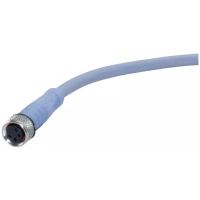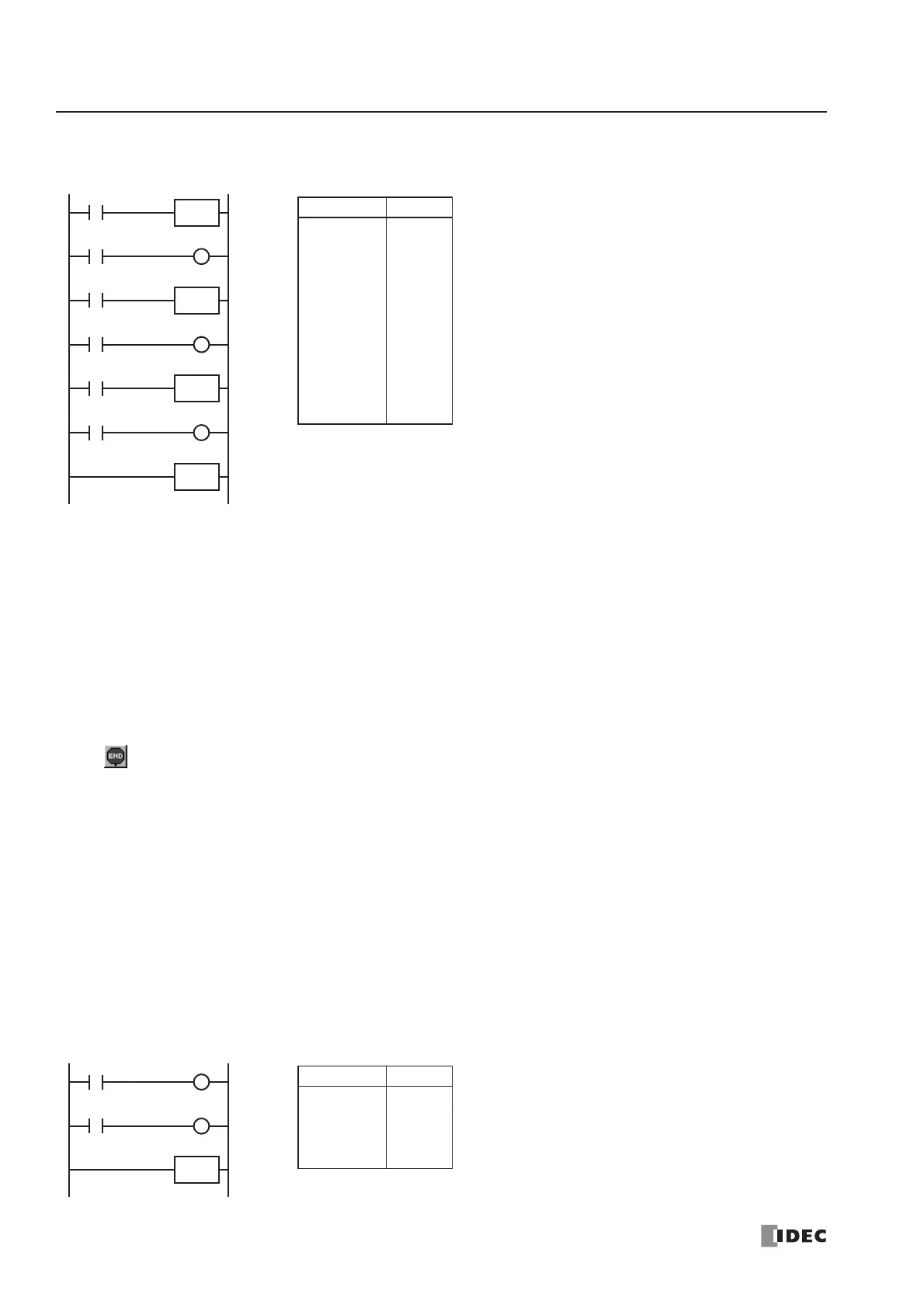7: BASIC INSTRUCTIONS
7-26 « FC4A MICROSMART USER’S MANUAL »
JMP (Jump) and JEND (Jump End), continued
END
The END instruction is always required at the end of a program; however, it is not necessary to program the END instruc-
tion after the last programmed instruction. The END instruction already exists at every unused address. (When an address
is used for programming, the END instruction is removed.)
A scan is the execution of all instructions from address zero to the END instruction. The time required for this execution is
referred to as one scan time. The scan time varies with respect to program length, which corresponds to the address where
the END instruction is found.
During the scan time, program instructions are processed sequentially. This is why the output instruction closest to the
END instruction has priority over a previous instruction for the same output. No output is initiated until all logic within a
scan is processed.
Output occurs simultaneously, and this is the first part of the END instruction execution. The second part of the END
instruction execution is to monitor all inputs, also done simultaneously. Then program instructions are ready to be pro-
cessed sequentially once again.
Ladder Diagram
I1
I2
I3
I4
I5
I6
JMP
JEND
JMP
JMP
This jump circuit will give priority to I1, I3, and I5, in that order.
When input I1 is on, the first JMP is executed so that subsequent output statuses of Q0 through Q2 are held.
When input I1 is off, the first JMP is not executed so that the following program is executed according to the actual input
statuses of I2 through I6.
When I1 is off and I3 is on, the second JMP is executed so that subsequent output statuses of Q1 and Q2 are held.
When both I1 and I3 are off, the first and second JMPs are not executed so that the following program is executed accord-
ing to the actual input statuses of I4 through I6.
Instruction Data

